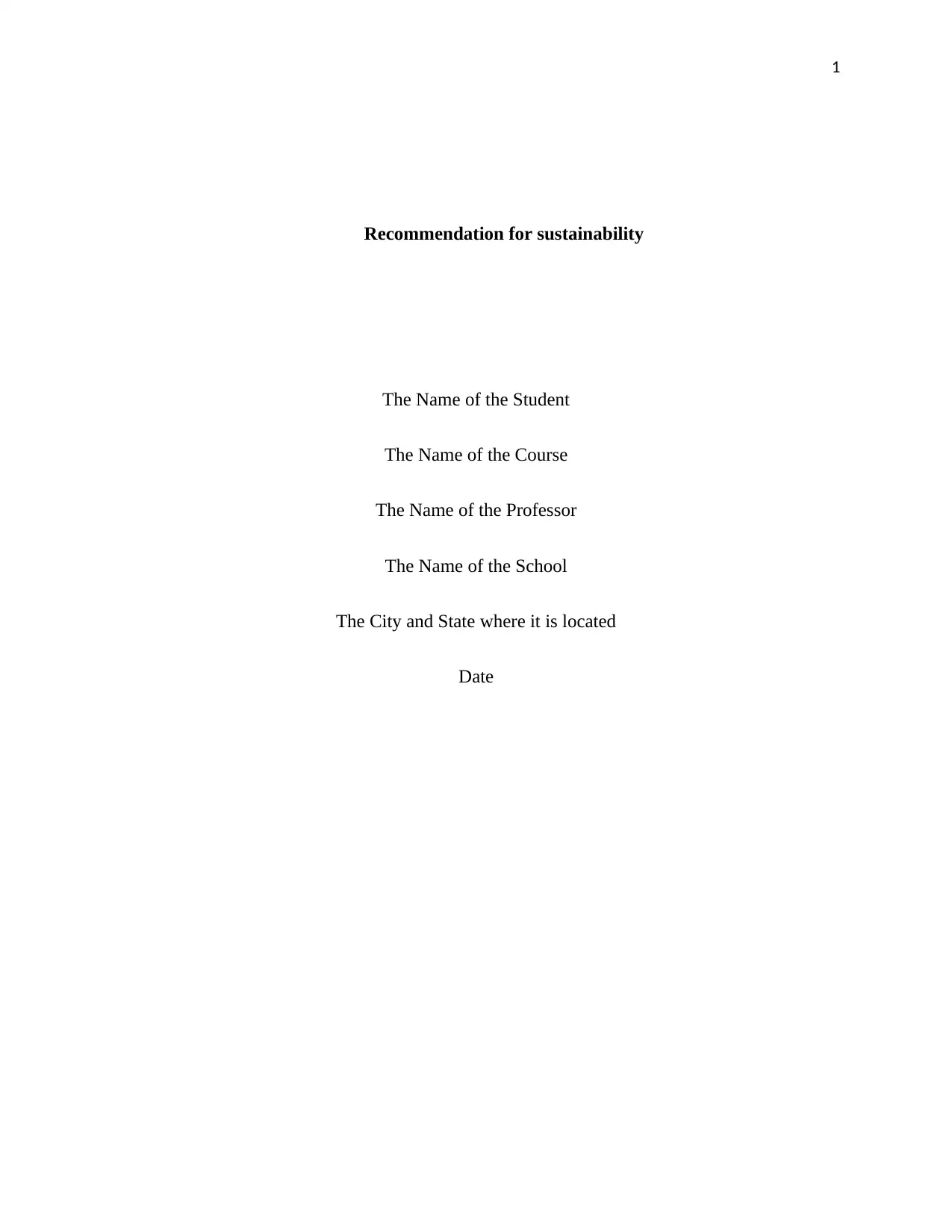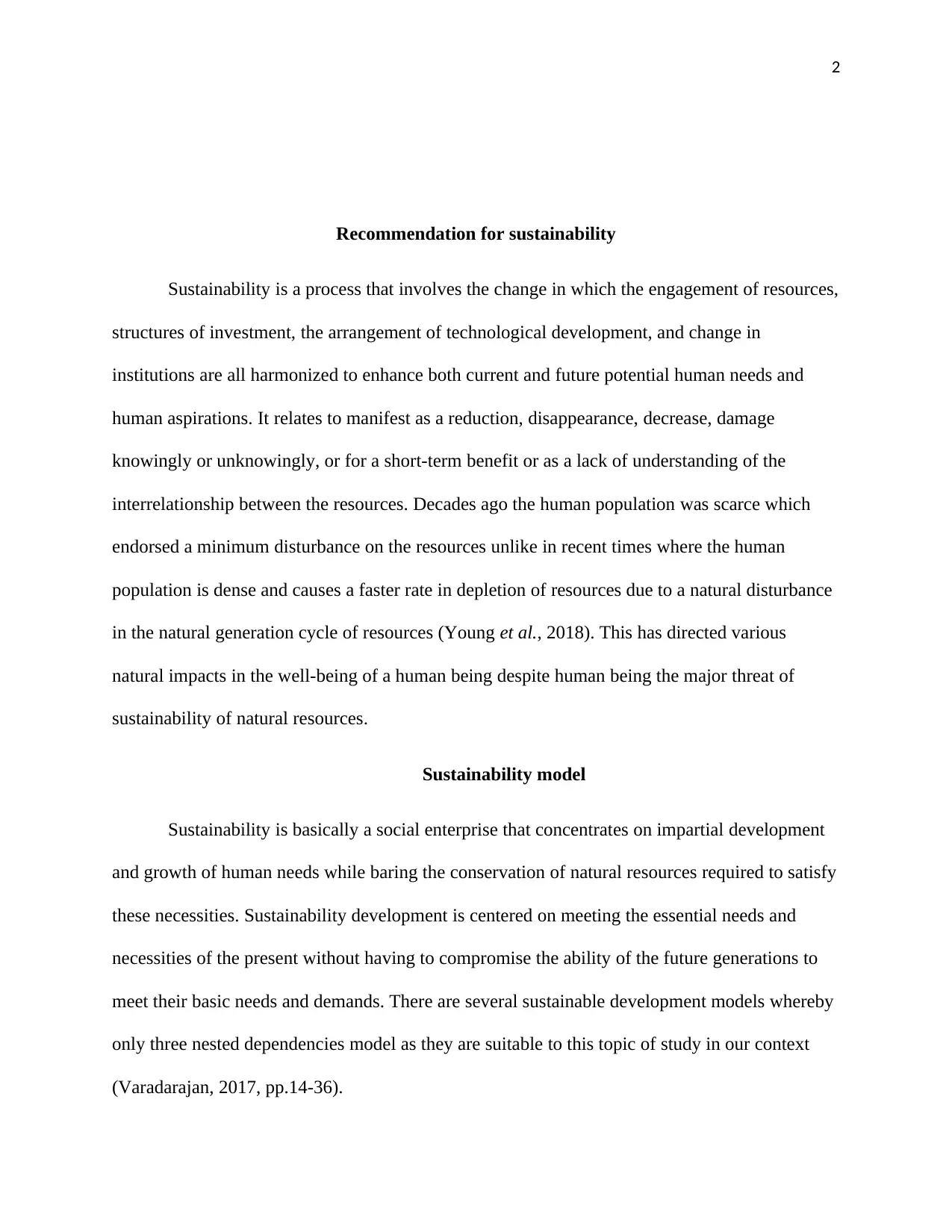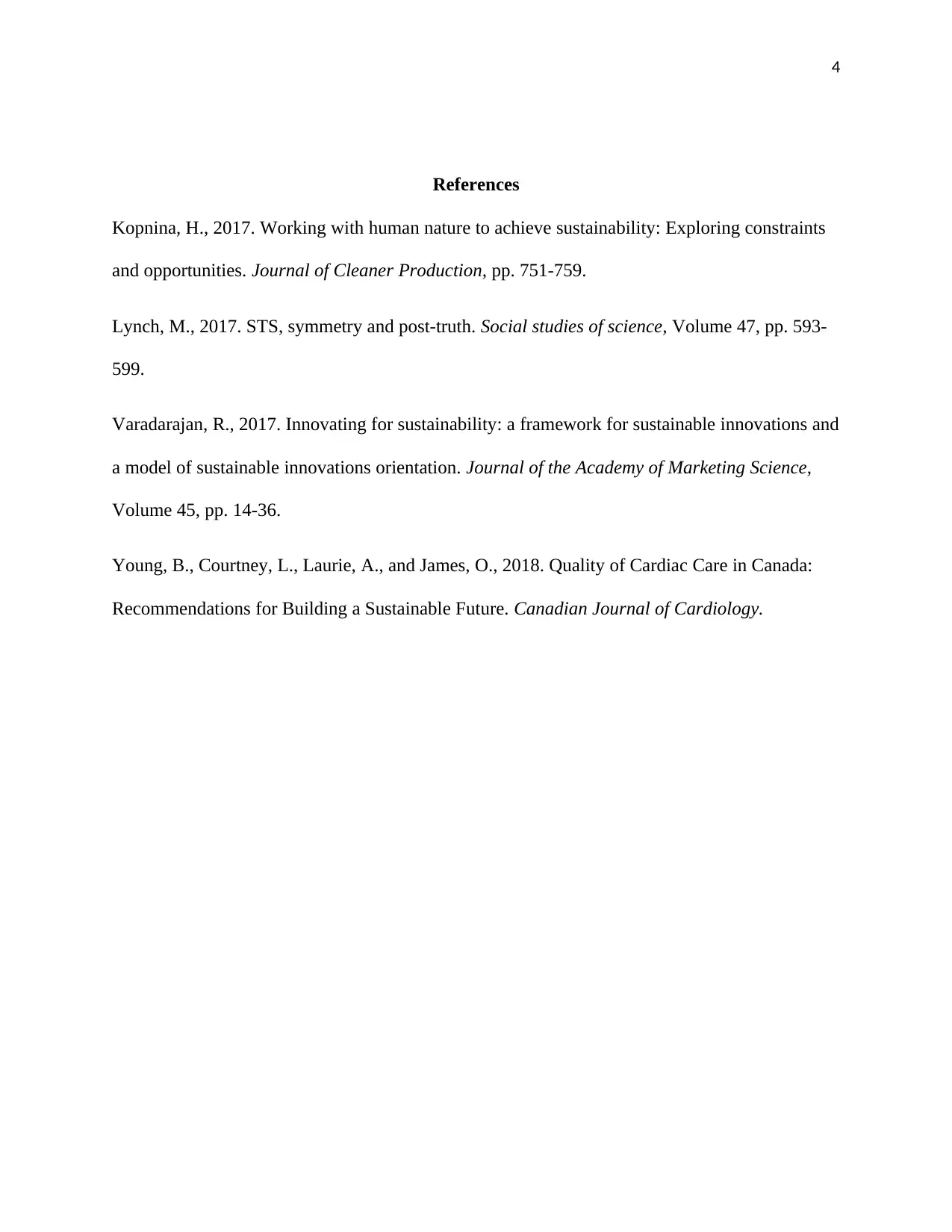Sustainability Recommendations: A Detailed Essay on Resource Use
VerifiedAdded on 2023/06/12
|4
|760
|104
Essay
AI Summary
This essay provides recommendations for sustainability, emphasizing the importance of harmonizing resource engagement, investment structures, technological development, and institutional changes to enhance current and future human needs and aspirations. It highlights the impact of human population density on resource depletion and discusses the sustainability model, particularly the three nested dependencies model, which includes the environment, society, and economy. The essay addresses climate change as a major sustainability issue in the US and explores the effects of globalization on resource procurement and economic links between nations. It concludes by referencing scholarly articles that delve into working with human nature to achieve sustainability, the relationship between science, symmetry, and post-truth, innovating for sustainability, and the quality of cardiac care as a model for a sustainable future.
1 out of 4











![[object Object]](/_next/static/media/star-bottom.7253800d.svg)